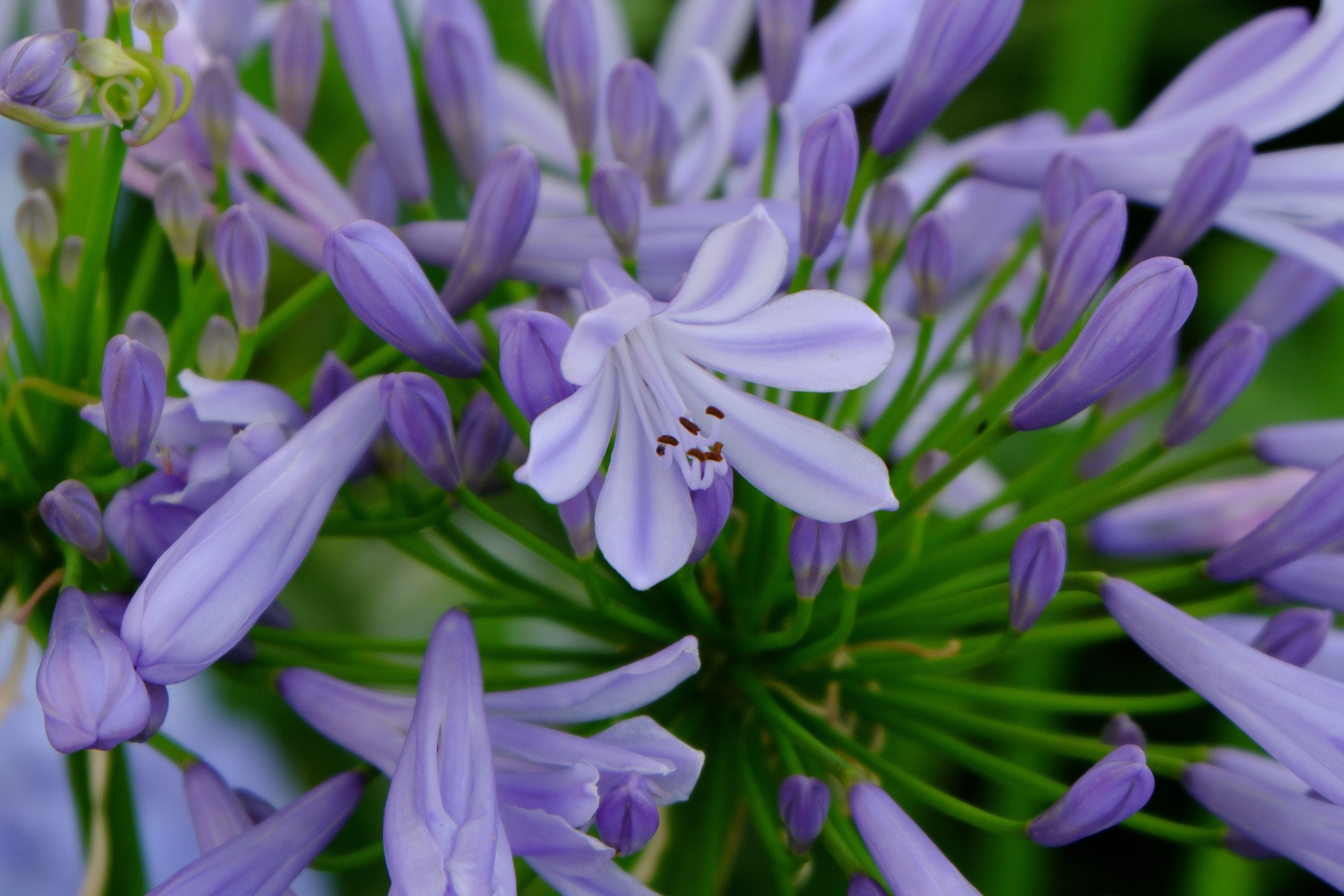African lily
(Agapanthus africanus)

Description
Agapanthus africanus, also known as the African lily or blue lily of the Nile, is a stunning flowering plant that belongs to the Amaryllidaceae family. Native to southern Africa, this plant has become popular worldwide due to its beautiful blooms and its ability to thrive in a variety of environments. In this article, we will explore the many aspects of Agapanthus africanus, from its physical characteristics to its cultural significance and practical applications. Physical Characteristics Agapanthus africanus is a perennial plant that can grow up to 1 meter tall. It has long, strap-like leaves that can reach up to 60 centimeters in length and are arranged in a basal rosette. The leaves are dark green, glossy, and slightly arching, creating an attractive mound of foliage. The plant's most distinctive feature is its stunning blooms, which appear in summer and continue into early autumn. The flowers are arranged in a rounded cluster known as an umbel, which can contain up to 100 individual flowers. Each flower has six petals that are fused at the base to form a trumpet-shaped bloom. The petals can range in color from white to blue to purple, with some cultivars featuring striped or bi-colored petals. The flowers are followed by large, round seed pods that contain black seeds. Cultural Significance Agapanthus africanus has a rich cultural history, particularly in southern Africa, where it is native. The plant was revered by the Zulu people, who believed that it had the power to protect against lightning strikes and other natural disasters. They would plant Agapanthus around their homes to ward off evil spirits and promote good luck. Today, Agapanthus is a popular ornamental plant worldwide, with many cultivars developed for their unique flower colors and forms. In some countries, such as Australia and New Zealand, Agapanthus africanus is considered an invasive species due to its ability to spread rapidly and outcompete native plants. However, in its native range, the plant plays an important ecological role as a food source for pollinators and as a soil stabilizer. Growing Conditions Agapanthus africanus is a hardy plant that can grow in a variety of environments, from coastal regions to mountainous areas. It prefers well-drained soil and can tolerate both full sun and partial shade. In areas with hot summers, it benefits from some afternoon shade to prevent scorching of the foliage. Agapanthus africanus can be propagated from seed or by dividing mature clumps. When growing from seed, it's important to note that the plant may not bloom for several years. Dividing mature clumps is the quickest way to obtain a blooming plant, but care should be taken to avoid damaging the plant's roots. Practical Applications Agapanthus africanus has several practical applications beyond its ornamental value. The plant's long, strap-like leaves can be used in floral arrangements and wreaths, while the dried seed pods can be used in dried flower arrangements. The plant also has medicinal properties and has been used traditionally in southern Africa to treat a variety of ailments, including colds, coughs, and chest infections. Recent studies have shown that Agapanthus extracts contain compounds with anti-inflammatory and antioxidant properties, which may have potential therapeutic benefits. Conclusion Agapanthus africanus is a beautiful and versatile plant with a rich cultural history and practical applications. Its stunning blooms and ability to thrive in a variety of environments make it a popular choice for gardeners worldwide, while its medicinal properties and use in traditional medicine highlight its importance beyond the garden. As we continue to discover more about this fascinating plant, its value and significance will only continue to grow.
Taxonomic tree:







